Many animals have adapted to living in caves. These adaptations allow them to survive in dark, wet, and cold environments. This article will explore fascinating and unique animals that call caves home. But first, we will discuss three main categories of cave life to give you a better understanding of this unique environment.
Types of Cave Animals
Cave animals are divided into three categories depending on how much time they spend inside the cave.
1. Trogloxenes
The name “trogloxenes” is derived from the Greek words “troglos,” meaning cave, and “xenos,” meaning “guest.” These animals are occasional visitors to caves and never spend their entire life cycle inside the cave. Most trogloxenes aren’t adapted to living in caves but occasionally look for food or seek shelter there.
2. Troglophiles
These organisms are cave lovers! While they primarily live in caves, troglophiles often explore the outside environment. They have adapted to the dark, isolated conditions of caves and can thrive in them. Some troglophiles have poor visual abilities or partial pigmentation, meaning if they remain in the caves for an extended period, they can become troglobites, which we’ll discuss next.
3. Troglobites
Troglobites are unique creatures with special adaptations for surviving in caves only. They are true cave dwellers who spend their entire lives in the dark, underground environment. Most troglobites are blind, and their skin lacks pigment, giving them a whitish or pinkish appearance. To compensate for the lost or reduced functions, they have elongated antennae, long legs, and enhanced sense organs that help them find food.
11 Animals That Live in Caves
Now that you know a little about the different categories of cave life, let’s take a closer look at some of the fascinating animals that call caves their home.
1. Kaua’i Cave Wolf Spider (Adelocosa anops)

The Kaua’i cave wolf spider was discovered in 1973 in a lava flow on the Hawaiian island of Kaua’i.
©Gordon Smith, Public domain, via Wikimedia Commons
The Kaua’i cave wolf spider, also known as the “blind spider,” was discovered in 1973 in a lava flow on the Hawaiian island of Kaua’i. It is an obligate troglobite living in large cave passages and tiny cracks that aren’t accessible to humans. Compared to its surface-dwelling relatives with large eyes, this species has completely lost its eyes.
Unlike other spiders that build webs to catch prey, the Kaua’i cave wolf spider relies on vibrations and chemical signals to detect prey. This spider is an opportunistic feeder, with its favorite prey being the Kaua’i cave amphipod, an endemic species found only in the caves of Kaua’i.
2. Olm (Proteus anguinus)

The olm is a highly adapted species with an array of super-senses.
©lucacavallari/Shutterstock.com
This cave-dwelling amphibian is known as the ‘human fish’ because of its pale, pinkish skin. It inhabits the karst caves of Central and Southeastern Europe. When the olm was first discovered, people believed it was a baby dragon because of its small snake-like body and dark, aquatic cave habitat.
The olm is a highly adapted species with an array of super-senses. It can sense electric fields and a heightened sense of smell and hearing. Since it is completely blind, the olm relies heavily on these senses to survive in its dark, aquatic environment. Its favorite prey includes insects, snails, and crabs. Population fragmentation and habitat degradation are major threats to olms.
3. Tooth Cave Pseudoscorpion (Tartarocreagris texana)
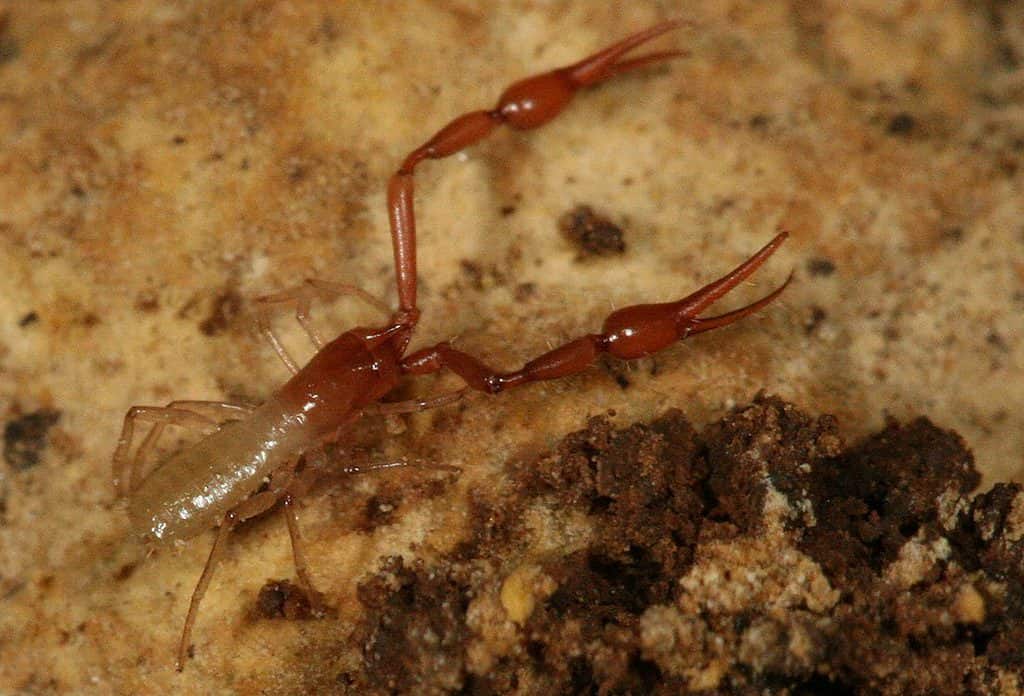
The tooth cave pseudoscorpion lacks a tail and stingers.
©Piershendrie / CC BY-SA 3.0 – License
This eyeless, unpigmented pseudoscorpion falls under the category of troglobites. It is a scorpion-like arachnid belonging to the family of Neobisiidae.
Measuring only about 0.15 inches long, the Tooth Cave pseudoscorpion has sensory hairs that make up for poor eyesight. They allow navigation and hunting in absolute darkness. The Tooth Cave pseudoscorpion lacks a tail and stingers. However, it uses its tiny pincers to target small insects and arthropods within its range.
4. European Cave Spider (Meta menardi)

European cave spiders are notable for their attraction to areas bats frequently visit.
©iStock.com/Jonas Rönnbro
This species is naturally found in a large area, stretching from Europe to Korea and from Scandinavia to North Africa. It is representative of troglophiles as it can adapt to life in caves and survive outside caves and mines, too. European cave spiders emerge from the caves and mines around dusk to hunt for small invertebrates such as myriapods and slugs.
These spiders are notable for their attraction to areas bats frequently visit. Adult European cave spiders are photophobic, meaning they are intolerant to light, while their young ones are drawn to it.
5. Cave Beetle (Leptodirus hochenwartii )
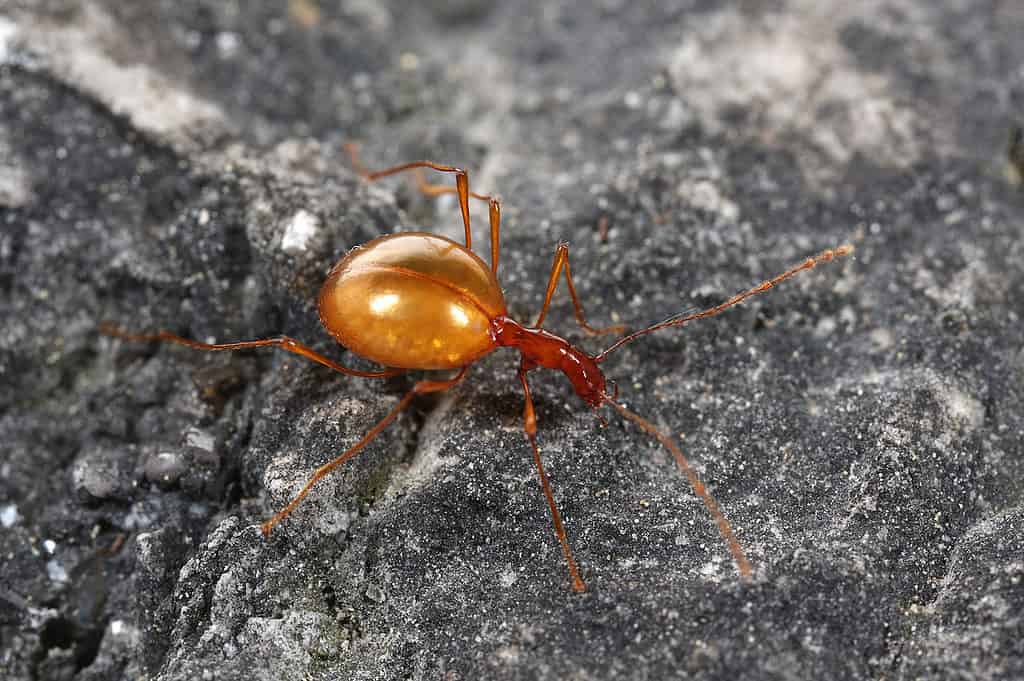
The cave beetle has adaptations such as elongated legs and antennae, a lack of wings, skin pigmentation, and functional eyes.
©Yerpo / CC BY-SA 3.0 – License
Another cave creature adapted to life in total darkness is the cave beetle. This creature is a true troglobite that cannot survive outside its cave. Its life is entirely subterranean, thriving in cold caves where the temperature doesn’t exceed 54 °F. It feeds on organic material that enters the cave through animal droppings or water percolation. Like other troglobitic animals, the cave beetle has adaptations such as elongated legs and antennae, a lack of wings, skin pigmentation, and functional eyes.
6. Swiftlet (Collocaliini)

Swiftlets can be distinguished from many swift species by their ability to navigate through narrow spaces and shafts caves.
©Wang LiQiang/Shutterstock.com
The term “swiftlet” refers to any of the numerous cave-dwelling birds belonging to the Hydrochous, Aerodramus, Collocalia, and Schoutedenapus genera in the Collocaliini tribe. Around 40 species are found in southeastern Asia’s tropical and subtropical regions, the South Pacific islands, and northeastern Australia.
Unlike other swifts, these birds fly slowly and lower to the ground. Swiftlets can be distinguished from many swift species by their ability to navigate through narrow spaces and shafts caves, which serve as nesting sites. Another distinguishing feature is that some swiftlet species possess echolocation abilities, which they use to navigate the caves and find their nests. These nests are often built up only from saliva!
7. Luray Caverns Blind Cave Millipede (Trichopetalum white)

The Luray Caverns Blind Cave millipede was first discovered in the Luray Caverns.
©John A. Ryder / public domain – License
This species is a rare troglobitic invertebrate belonging to the Trichopetalum genus. It was first discovered in the Luray Caverns, and it now inhabits caves along the upper Potomac River drainage in West Virginia and Virginia.
Like other troglobites, this millipede lacks eyes and is unpigmented. Instead, it has other adaptations, such as elongated segmental setae, that allow it to thrive in the dark environment of caves. It is considered omnivorous and uses its mouthparts to scrap and pick up food material from the cave floor. Despite being relatively little studied, this cave-dwelling creature is considered globally vulnerable.
8. Benton County Cave Crayfish (Cambarus aculabrum)
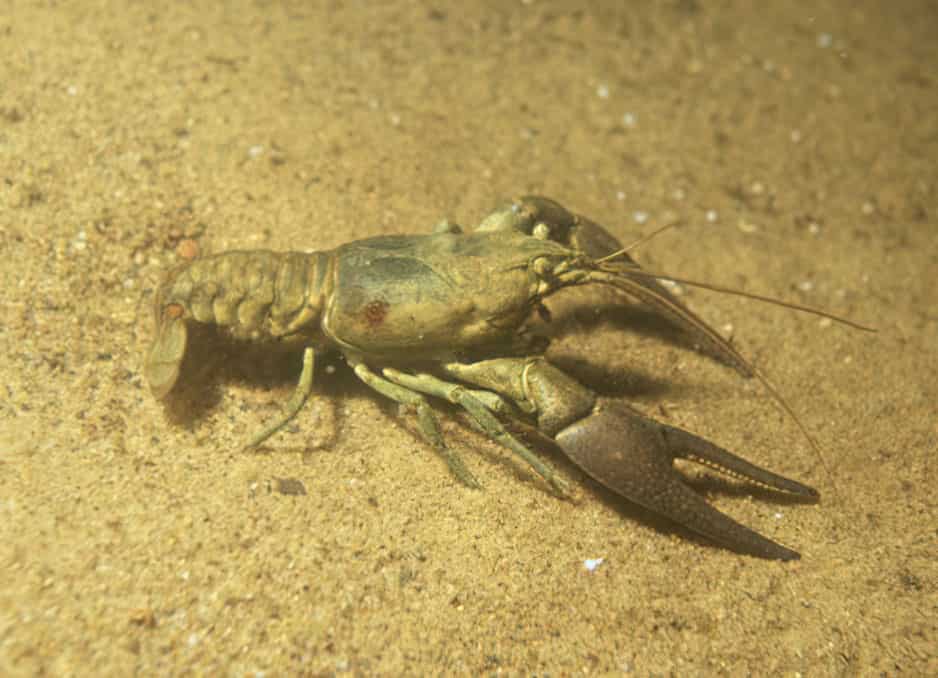
Cave crayfish presumably feed on roots, stems, and leaf fragments they find within their range.
©USFWS / public domain – License
This tiny, white, cave-dwelling crayfish species is native to the limestone caves in Arkansas, United States. It can be found in pool and stream habitats found in caves. Cave crayfish are typically tiny, measuring up to 1.8 inches long. Several unique adaptations allow them to thrive in extreme, dark environments. These adaptations include the lack of pigment, underdeveloped eyes, and slow, energy-efficient metabolisms. Cave crayfish presumably feed on roots, stems, and leaf fragments they find within their range.
9. Devils Hole Pupfish (Cyprinodon diabolis)
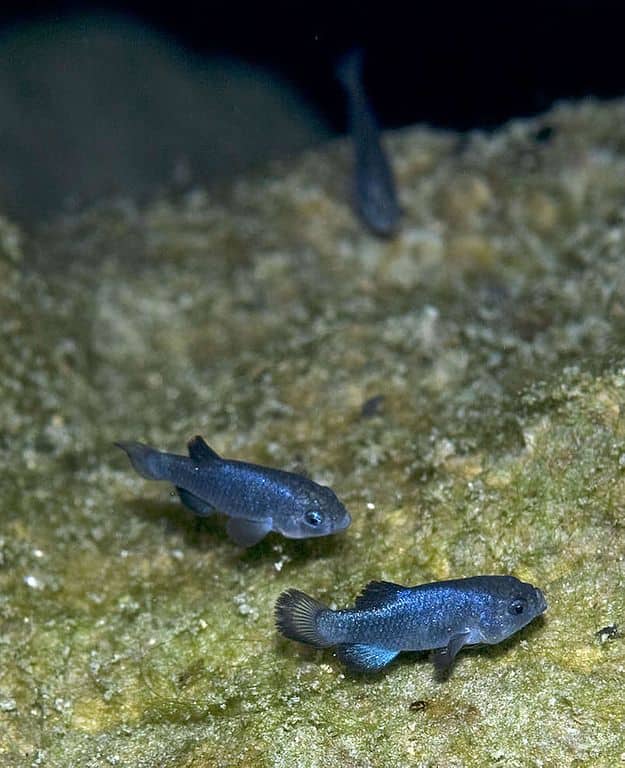
Devils Hole pupfish lack pelvic fins and exhibit low fecundity.
©Olin Feuerbacher / USFWS / public domain – License
Devils Hole pupfish are small, critically endangered fish found only in Devils Hole, a water-filled geological formation in Nevada. These tiny pupfish earned their name from their playful pup-like behavior.
Devils Hole pupfish lack pelvic fins and exhibit low fecundity. They are small, with a maximum length of just 1.2 inches. Devil’s Hole Pupfish have adapted to the extreme conditions of their habitat, where water temperatures can reach 91 degrees Fahrenheit and dissolved oxygen levels are very low. Despite these challenging conditions, they can only live for around a year.
10. Texas Blind Salamander (Eurycea rathbuni)

The Texas blind salamander is an active predator sensitive to water pressure changes caused by other animals.
©Matt Jeppson/Shutterstock.com
The Texas blind salamander is another cave-dwelling amphibian on our list. This troglobitic creature is adapted to living in the water-filled caves of the Edwards Aquifer in Texas. Since it lives in total darkness, the salamander has underdeveloped eyes covered by skin, while its skin lacks pigmentation, giving it a translucent white color. It has pinkish external gills protruding from the throat area, which are used to absorb oxygen from the surrounding water.
The Texas blind salamander is an active predator sensitive to water pressure changes caused by other animals. This allows it to sense the movements of tiny snails, blind shrimp, and other aquatic invertebrates that make up its diet. An adult Texas salamander can grow up to five inches long.
11. Tumbling Creek Cavesnail (Antrobia culveri)
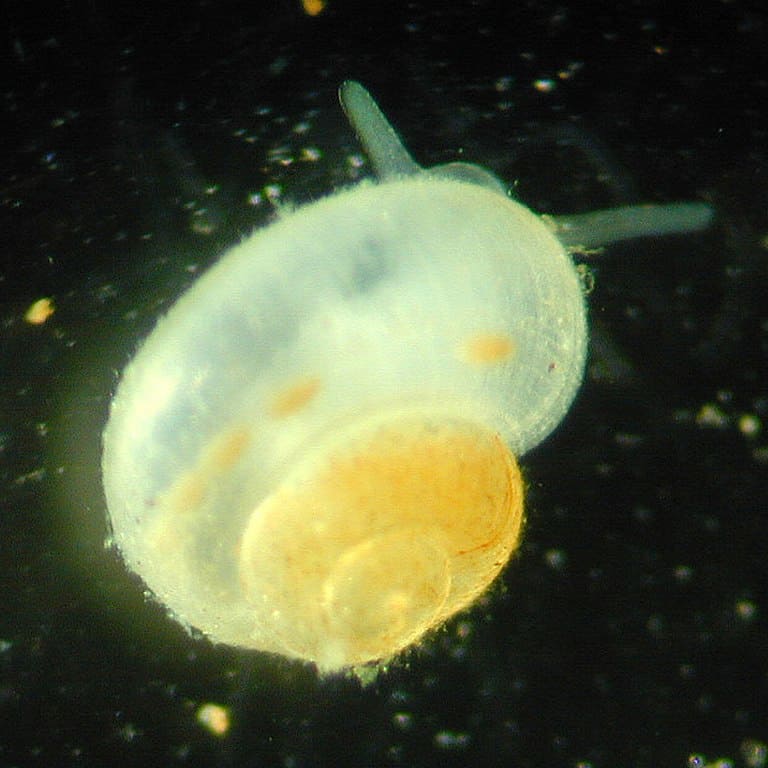
Tumbling Creek cavesnails dwell on the underside of rocks in the Tumbling Creek area.
©David Ashley (U.S. Fish and Wildlife Service) / public domain – License
Besides living in caves, these tiny, white, blind snails are aquatic troglobites or stygobites dwelling on the underside of rocks in the Tumbling Creek area. Although these snails are listed as endangered, they live their whole lives underground and are very sensitive to any changes in the quality or quantity of that water.
While little is known about their feeding habits, scientists believe they feed primarily on aquatic microfauna. They are also presumed to rely indirectly on bat guano since they live in areas with large bat guano deposits.
Up Next:
- 2 Snakes That Live in Caves
- 10 Beautiful Caves in Texas
- 15 Animals That Live in and Around the Swamp
- Discover the 5 Deepest Caves in the United States
The photo featured at the top of this post is © iStock.com/Ian_Redding
Sources
- , Available here: https://web.archive.org/web/20100105202046/http://ans.latech.edu/homes/wakeman/caves/cavelife.html
- National Park Service, Available here: https://www.nps.gov/ozar/learn/education/cave-biology.htm#
- World of Caves, Available here: https://worldofcaves.com/cave-dwellers-cave-wildlife-101/
- Animals Around The Globe, Available here: https://www.animalsaroundtheglobe.com/top-10-cave-animals/
Thank you for reading! Have some feedback for us? Contact the AZ Animals editorial team.






